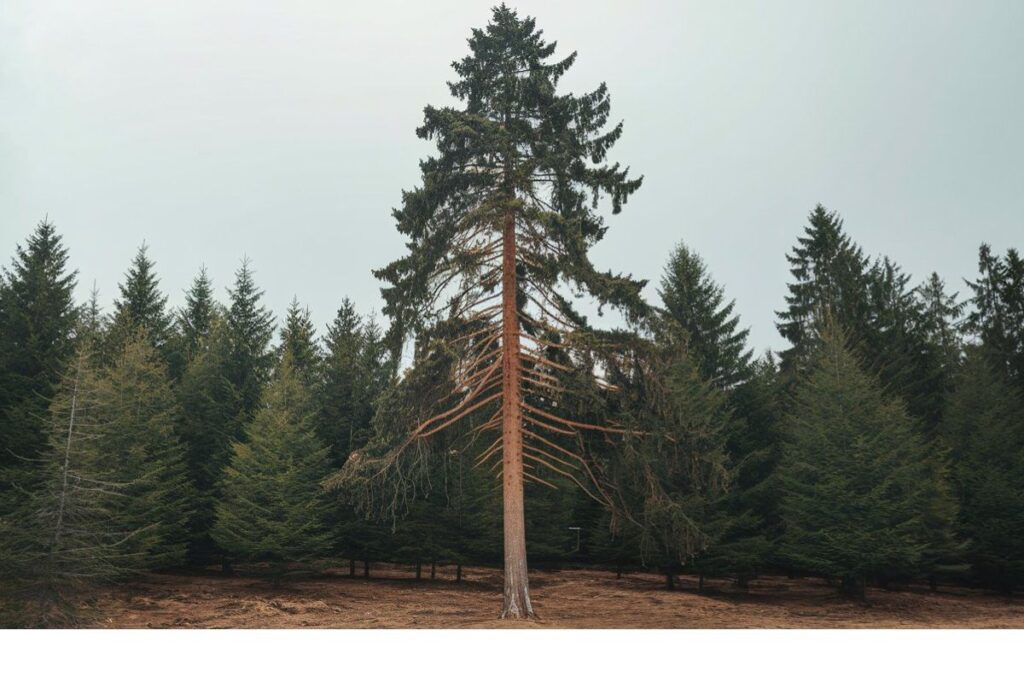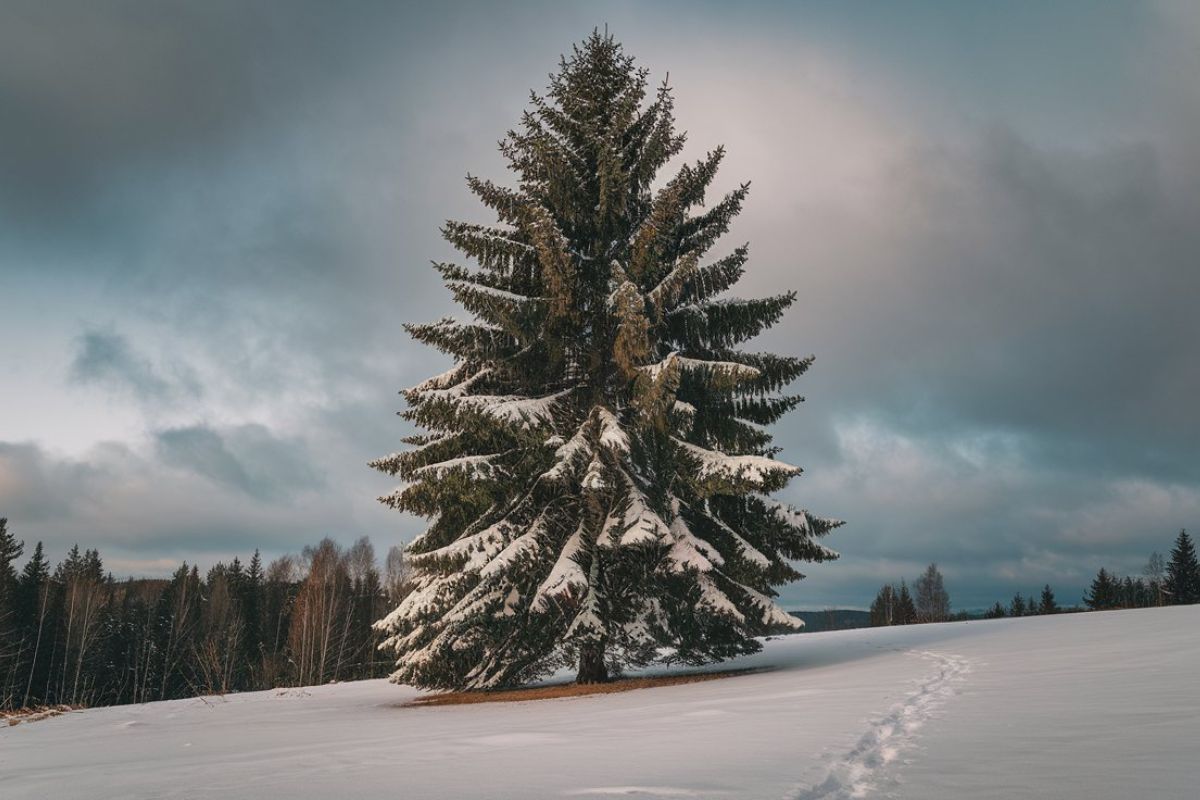The fir tree, a majestic and resilient evergreen, holds a special place in ecosystems, culture, and traditions worldwide. Known for its towering presence, fragrant needles, and year-round greenery, the fir tree has long been revered as a symbol of endurance and vitality. This article delves into the fascinating world of the fir tree, exploring its characteristics, ecological significance, uses, cultural symbolism, and much more.
What is a Fir Tree?
The fir tree belongs to the genus Abies in the Pinaceae family, which encompasses around 50 species. Native to the northern hemisphere, fir trees are predominantly found in North America, Europe, and Asia. These conifers thrive in temperate and boreal forests, often forming dense stands in high-altitude regions.
Key Characteristics
- Evergreen Needles: Fir trees have flat, needle-like leaves that remain green throughout the year.
- Cone Shape: Unlike many conifers, fir tree cones grow upright on branches and disintegrate upon maturity.
- Bark: The bark varies across species, ranging from smooth and gray to rough and deeply fissured with age.
- Height: Fir trees can reach towering heights, often growing between 30 and 80 meters.
Types of Fir Trees
1. Balsam Fir (Abies balsamea)
- Native Region: North America
- Uses: Widely used as a Christmas tree due to its aromatic fragrance and symmetrical shape.
2. Fraser Fir (Abies fraseri)
- Native Region: Appalachian Mountains of the United States
- Distinguishing Feature: Soft needles with a silvery underside.
3. Noble Fir (Abies procera)
- Native Region: Pacific Northwest, USA
- Key Use: Known for its durable wood, often used in construction and crafts.
4. Silver Fir (Abies alba)
- Native Region: Europe
- Significance: Historically used for timber and as a symbol of resilience in European folklore.
5. Korean Fir (Abies koreana)
- Native Region: Korea
- Unique Trait: Striking purple cones that add ornamental value.

Ecological Importance of Fir Trees
Fir trees play a critical role in maintaining the health of forest ecosystems. Their presence benefits the environment in numerous ways:
1. Carbon Sequestration
Fir trees absorb carbon dioxide from the atmosphere, helping mitigate climate change by reducing greenhouse gases.
2. Soil Stabilization
The extensive root systems of fir trees prevent soil erosion, particularly on slopes and mountainous terrain.
3. Habitat for Wildlife
Fir forests provide shelter and food for a variety of wildlife, including birds, insects, and mammals. Species like owls and squirrels thrive in fir ecosystems.
4. Climate Regulation
By maintaining forest canopy cover, fir trees regulate temperature, reduce wind speeds, and influence precipitation patterns.
Cultural and Symbolic Significance
The fir tree has deep roots in cultural traditions and symbolism, often associated with immortality and resilience due to its evergreen nature.
1. Christmas Tradition
Fir trees are synonymous with Christmas celebrations, symbolizing life and hope. The practice of decorating fir trees dates back to 16th-century Germany, later spreading across the world.
2. Folklore and Mythology
- Norse Mythology: Fir trees were believed to be sacred to the gods and associated with protection.
- Celtic Culture: Fir trees symbolized longevity and the eternal cycle of life.
3. Modern Symbolism
Today, the fir tree represents environmental conservation and the importance of preserving green spaces.
Uses of Fir Trees
Fir trees are valued not only for their ecological role but also for their versatility in human applications.
1. Timber and Construction
The durable wood of fir trees is used for building homes, furniture, and utility poles. It is particularly prized for its strength and resistance to decay.
2. Pulp and Paper
Fir trees are a primary source of pulpwood for producing paper and packaging materials.
3. Essential Oils
Fir needle oil, extracted from the leaves, is used in aromatherapy, perfumes, and cleaning products for its refreshing scent and antiseptic properties.
4. Ornamental Uses
Species like the Korean Fir are cultivated for landscaping due to their aesthetic appeal.
5. Medicinal Uses
Traditional medicine systems have utilized fir tree extracts to treat respiratory ailments, skin conditions, and inflammation.

Fir Trees in Landscaping
this trees are a popular choice for landscaping due to their towering beauty and year-round greenery. Here are some tips for growing and maintaining :
1. Planting Requirements
- Soil: Well-drained, slightly acidic soil.
- Light: Full sunlight to partial shade.
- Spacing: Adequate room to accommodate their large size.
2. Care and Maintenance
- Watering: Ensure consistent watering during dry periods.
- Pruning: Consistently prune dead or diseased branches to encourage robust growth.
- Fertilization: Apply slow-release fertilizer in spring for optimal growth.
3. Pest and Disease Management
Fir trees can be vulnerable to pests like aphids and diseases such as root rot. Monitoring and timely intervention are crucial.
Fir Trees and Climate Change
The resilience of fir trees is being tested as climate change alters their natural habitats. Rising temperatures, changes in precipitation patterns, and increased pest outbreaks pose significant challenges.
1. Migration of Species
Fir trees are shifting to higher altitudes or latitudes to adapt to changing conditions.
2. Conservation Efforts
Efforts are underway to protect fir forests through reforestation, habitat restoration, and genetic research to develop climate-resilient species.
Interesting Facts About Fir Trees
- Longest-Living Fir: The Grand Fir (Abies grandis) can live over 300 years in optimal conditions.
- World’s Tallest Fir: The tallest recorded Noble Fir stands at 89 meters in Oregon, USA.
- Unique Adaptation: Fir needles have a waxy coating that reduces water loss, allowing them to thrive in cold climates.
Preservation and Sustainable Use
Sustainable practices are crucial for preserving fir tree populations and their ecosystems. Here are some initiatives promoting conservation:
1. Sustainable Forestry
Certifications like FSC (Forest Stewardship Council) ensure that fir trees are harvested responsibly.
2. Community Reforestation
Programs that involve local communities in planting and maintaining fir forests contribute to environmental and social well-being.
3. Education and Awareness
Raising public awareness about the ecological value of fir trees encourages support for conservation efforts.
Frequently Asked Questions About Fir Trees
Q1: How do you identify a fir tree?
A: Fir trees can be identified by their flat needles, upright cones, and smooth or fissured bark.
Q2: Can fir trees grow in warm climates?
A: While this trees prefer cooler climates, certain species, such as the Silver Fir, can adapt to milder regions.
Q3: Are fir trees endangered?
A: Some species, like the Greek Fir (Abies cephalonica), are considered vulnerable due to habitat loss and climate change.
Q4: How long does it take for a fir tree to mature?
A: this trees typically take 20 to 50 years to reach maturity, depending on the species.
Q5: Can fir trees be grown in pots?
A: Small fir tree species or young saplings can be grown in pots temporarily, but they require transplanting to the ground as they grow.
Q6: What is the economic value of fir trees?
A: Fir trees contribute significantly to industries such as timber, paper production, essential oils, and holiday decorations.

Conclusion
The fir tree stands as a remarkable symbol of resilience and vitality, offering immense ecological, cultural, and economic value. Its evergreen beauty, ability to thrive in diverse climates, and role in carbon sequestration make it a vital component of forest ecosystems.
From providing habitats for wildlife to supporting industries like timber and essential oils, this tree continues to impact both nature and humanity positively. However, challenges such as climate change and deforestation demand sustainable management and conservation efforts to preserve these trees for future generations. By valuing and protecting fir trees, we not only ensure the health of our forests but also contribute to a greener, more sustainable planet. The enduring legacy is a testament to nature’s ability to inspire and sustain life.

